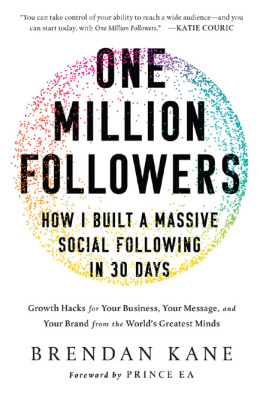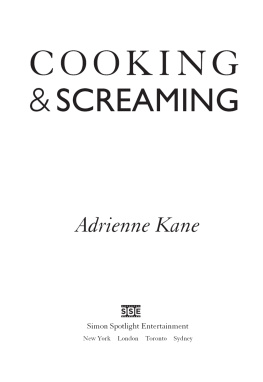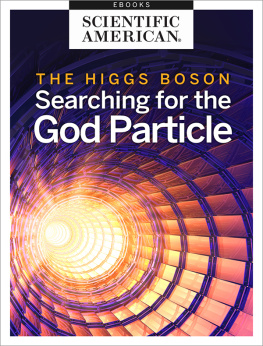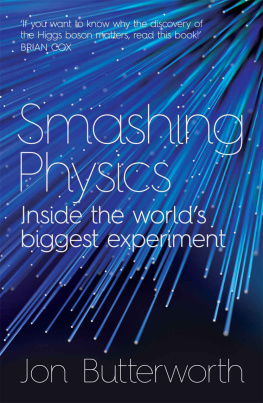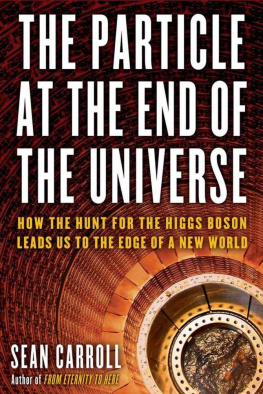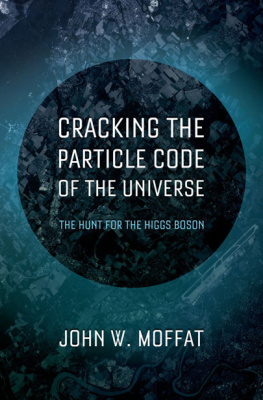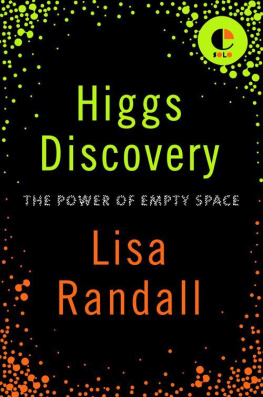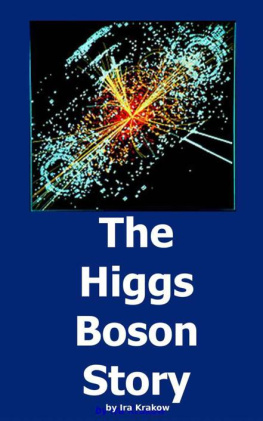Kane - Supersymmetry and beyond: from the Higgs boson to the new physics
Here you can read online Kane - Supersymmetry and beyond: from the Higgs boson to the new physics full text of the book (entire story) in english for free. Download pdf and epub, get meaning, cover and reviews about this ebook. City: New York, year: 2013, publisher: Basic Books, genre: Children. Description of the work, (preface) as well as reviews are available. Best literature library LitArk.com created for fans of good reading and offers a wide selection of genres:
Romance novel
Science fiction
Adventure
Detective
Science
History
Home and family
Prose
Art
Politics
Computer
Non-fiction
Religion
Business
Children
Humor
Choose a favorite category and find really read worthwhile books. Enjoy immersion in the world of imagination, feel the emotions of the characters or learn something new for yourself, make an fascinating discovery.

Supersymmetry and beyond: from the Higgs boson to the new physics: summary, description and annotation
We offer to read an annotation, description, summary or preface (depends on what the author of the book "Supersymmetry and beyond: from the Higgs boson to the new physics" wrote himself). If you haven't found the necessary information about the book — write in the comments, we will try to find it.
Kane: author's other books
Who wrote Supersymmetry and beyond: from the Higgs boson to the new physics? Find out the surname, the name of the author of the book and a list of all author's works by series.
Supersymmetry and beyond: from the Higgs boson to the new physics — read online for free the complete book (whole text) full work
Below is the text of the book, divided by pages. System saving the place of the last page read, allows you to conveniently read the book "Supersymmetry and beyond: from the Higgs boson to the new physics" online for free, without having to search again every time where you left off. Put a bookmark, and you can go to the page where you finished reading at any time.
Font size:
Interval:
Bookmark:
From the Higgs Boson to the New Physics

REVISED EDITION
GORDON KANE
FOREWORD BY
EDWARD WITTEN
BASIC BOOKS
A Member of the Perseus Books Group
New York
Copyright 2013 by Gordon Kane
Published by Basic Books,
A Member of the Perseus Books Group
All rights reserved. No part of this book may be reproduced in any manner whatsoever without written permission except in the case of brief quotations embodied in critical articles and reviews. For information, address Basic Books, 250 West 57th Street, 15th Floor, New York, NY 10107-1307.
Books published by Basic Books are available at special discounts for bulk purchases in the United States by corporations, institutions, and other organizations. For more information, please contact the Special Markets Department at the Perseus Books Group, 2300 Chestnut Street, Suite 200, Philadelphia, PA 19103, or call (800) 810-4145, ext. 5000, or e-mail .
Library of Congress Cataloging-in-Publication Data
Kane, G. L.
[Supersymmetry]
Supersymmetry and beyond : from the Higgs boson to the new physics / Gordon Kane ; foreword by Edward Witten.Revised edition.
pages cm
Revision of: Supersymmetry. Cambridge, Mass. : Perseus Pub., 2000.
Includes bibliographical references and index.
ISBN 978-0-46508-046-5 1. Supersymmetry.
I. Title.
QC174.17.S9K36 2013
539.7'25dc23
2013006737
10 9 8 7 6 5 4 3 2 1
To Sarah, Chelsea, and Noah
Looking back at centurys end, it is stunning to think how our understanding of physics has changed in the last hundred years. The great insights of the early part of the twentieth century were of course Relativity Theory and Quantum Mechanics. We learned in Einsteins Special Relativity Theory of the strange behavior of fast moving objects, and in his even more surprising General Relativity we learned to reinterpret gravity in terms of the curvature of space and time caused by matter. As for Quantum Mechanics, it taught us that fact is far more wondrous than fiction in the atomic world.
Special Relativity and Quantum Mechanics were fused in Quantum Field Theory, whose most remarkable predictionverified experimentally in cosmic rays around 1930is the existence of antimatter. Quantum Field Theory is a very difficult theory to understand even for specialists; trying to understand it has occupied the attention of many leading physicists for generations.
The last fifty years have been an amazing period of experimental discoveries and surprises, including strange particles, the breaking of symmetry between left and right and between past and future, neutrinos, quarks, and more. Drawing on this material, theoretical physicists have been able, in the Quantum Field Theory framework, to construct the Standard Model of particle physics, which puts under one roof most of what we know about fundamental physics. It describes in one framework electricity and magnetism, the weak force responsible among other things for nuclear beta decay, and the nuclear force.
Is this journey of discovery nearing an end? Or will the next half century be a period of surprises and discoveries rivaling those of the past? The questions we can ask today are as exciting as any in the past, and at least some of the answers can be found in the coming period if we stay the course.
Just in recent months, newspapers have been filled with exciting accounts of the apparent discovery of the Higgs particle at the CERN laboratory near Geneva, Switzerland. This substantially clarifies our understanding of particle physics and helps explain why two of the important elementary particle forceselectromagnetism and the weak interactionsare so different in our everyday experience. It also offers an experimentally accessible prototype of new fields that are required in modern theories of the unification of particle forces, as well as our best understanding of the early universe in the theory of cosmic inflation. Meanwhile, ongoing experiments test the strange properties of neutrinos, and apparently show that the little neutral particle of Fermi does have a tiny but nonzero mass after all. Astronomers have unraveled new and challenging hints that General Relativity may need to be corrected by adding Einsteins cosmological constantthe energy of the vacuum. Novel and inventive dark matter searches are probing the invisible stuff of the universe. Satellite probes of fluctuations in the leftover radiation from the big bang are likely, in the next few years, to challenge our understanding of the early universe.
But one of the biggest adventures of all is the search for supersymmetry. Supersymmetry is the framework in which theoretical physicists have sought to answer some of the questions left open by the Standard Model of particle physics. The Standard Model, for example, does not explain the particle masses. If particles had the huge masses allowed by the Standard Model, the universe would be a completely different place. There would be no stars, planets, or people, since any collection of more than a handful of elementary particles would collapse into a Black Hole. Subtle mysteries of modern physicslike space-time curvature, Black Holes, and quantum gravitywould be obvious in everyday life, except that there would be no everyday life.
Supersymmetry, if it holds in nature, is part of the quantum structure of space and time. In everyday life, we measure space and time by numbers, It is now three oclock, the elevation is two hundred meters above sea level, and so on. Numbers are classical concepts, known to humans since long before Quantum Mechanics was developed in the early twentieth century. The discovery of Quantum Mechanics changed our understanding of almost everything in physics, but our basic way of thinking about space and time has not yet been affected.
Showing that nature is supersymmetric would change that, by revealing a quantum dimension of space and time, not measurable by ordinary numbers. This quantum dimension would be manifested in the existence of new elementary particles, which would be produced in accelerators and whose behavior would be governed by supersymmetric laws. Experimental clues suggest that the energy required to produce the new particles is not much higher than that of present accelerators. If supersymmetry plays the role in physics that we suspect it does, then it is very likely to be discovered by the Large Hadron Collider (LHC), or its upgrades, at CERN in Geneva, Switzerland.
When Einstein introduced Special Relativity in 1905 and then General Relativity in 1915, Quantum Mechanics was still largely in the future, and Einstein assumed that space and time can be measured by ordinary numbers. Einsteins conception of space and time has been adequate for discoveries made until the present, but discovery of supersymmetry would begin a reworking of Einsteins ideas in the light of Quantum Mechanics.
Discovery of supersymmetry would be one of the real milestones in physics, made even more exciting by its close links to still more ambitious theoretical ideas. Indeed, supersymmetry is one of the basic requirements of string theory, which is the framework in which theoretical physicists have had some success in unifying gravity with the rest of the elementary particle forces. Discovery of supersymmetry would surely give string theory an enormous boost.
Font size:
Interval:
Bookmark:
Similar books «Supersymmetry and beyond: from the Higgs boson to the new physics»
Look at similar books to Supersymmetry and beyond: from the Higgs boson to the new physics. We have selected literature similar in name and meaning in the hope of providing readers with more options to find new, interesting, not yet read works.
Discussion, reviews of the book Supersymmetry and beyond: from the Higgs boson to the new physics and just readers' own opinions. Leave your comments, write what you think about the work, its meaning or the main characters. Specify what exactly you liked and what you didn't like, and why you think so.



